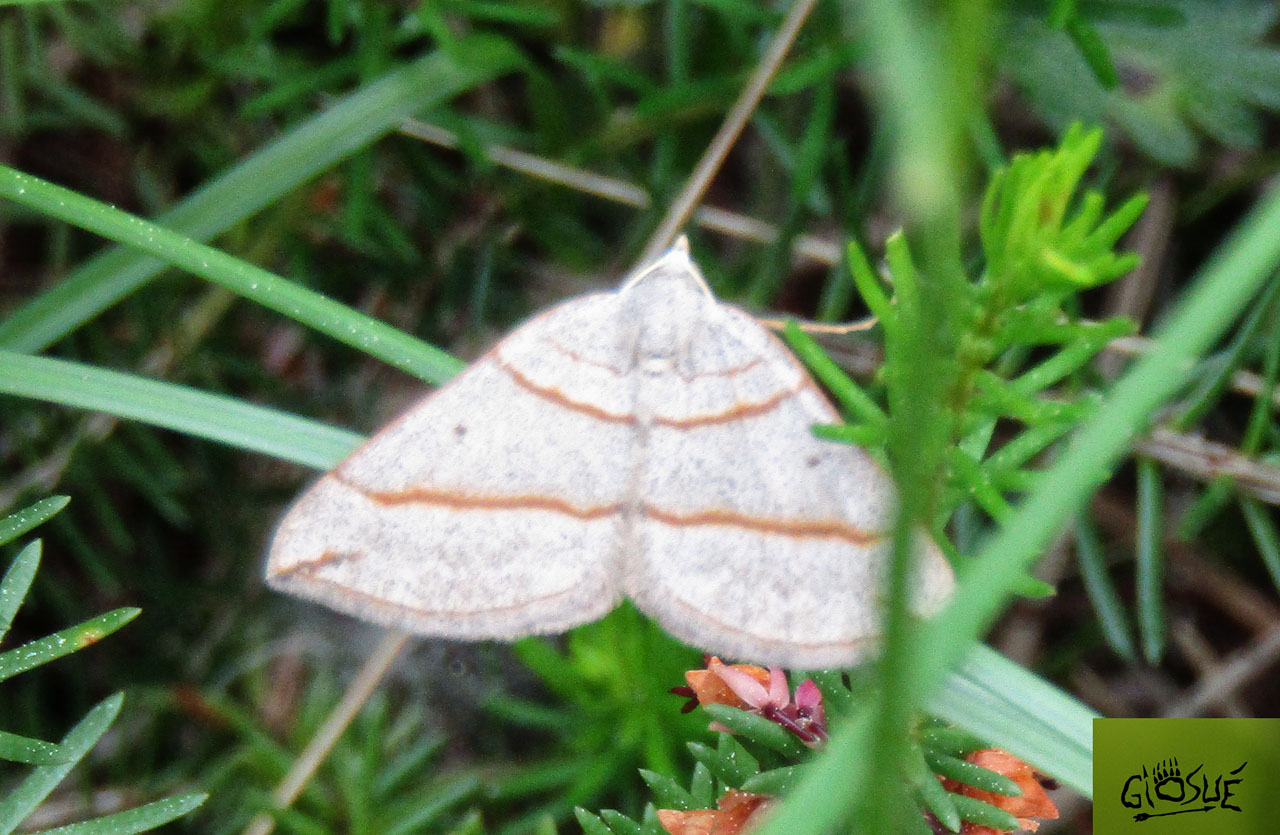Scotopteryx cfr. mucronata
(Scopoli, 1763)
-
 Subfamily: Larentiinae, Xanthorhoini
Subfamily: Larentiinae, Xanthorhoini -
 Wingspan: 26-36 mm
Wingspan: 26-36 mm -
 Flight period: Jun - Aug
Flight period: Jun - Aug -
 Spread: Uncommon
Spread: Uncommon -
 Host plants: Fabaceae
Host plants: Fabaceae
Information
The Scotopteryx mucronata also called Lead Belle is a moth of the Geometridae family, subfamily Sterrhinae, with a wingspan of 26-36 mm.
It is present throughout Europe with the exception of Norway, Finland, the Baltic countries and northern Russia. *
In Italy it is absent from the islands. *
Its range extends to Turkey and western Siberia. *
The background color of Scotopteryx mucronata is light ocher / faded light brown, with intense dark gray / black dusting.
Three dark ocher / brown transversal lines are visible on the front wing, the innermost not very developed. The median and the outer are outlined in yellow, and often in males they are
intensely shaded and enclose a dark band that crosses the wing. Another line starts from the apex towards the inner margin and runs about a quarter of the wing.
The front wing has acentral teardrop-shaped dark spot.
A thin dark ocher / brown line is visible along the edge of all wings. However, the pattern is variable.
The hind wings have a light ocher background color with dark dusting.
The head, thorax and abdomen have a slightly lighter background color of the wings.
Very similar to the congener Scotopteryx luridata but in the latter the discal point on the fore wings is located closer to the antemedian line
(inner line) compared to Scotopteryx mucronata and the hind wings are slightly darker and devoid of markings.
These moths frequent Moors, scrubs, heat-loving scrubs, fallows, fly by day and are attracted to artificial lights. ***.
The eggs are roughly spherical, white, knurled.
The caterpillars are light brown in color with a dashed brown / black dorsal line, on the sides of which two black dots are visible on each segment.
Light side lines with black dots on each segment. **
The pupa is brown, brown near the Cremaster where a sort of crown is visible on the last abdominal segment 0.
A series of filiform appendages, sometimes hooked, are visible on the apex. **
The larva feeds on Fabaceae such as Cytisus nigricans, Cytisus scoparius, Genista and Ulex. *, ***
* Lepidoptera mundi https://lepidoptera.eu/ - Fauna Europea https://fauna-eu.org/
** Bestimmungshilfe für die in Europa nachgewiesenen Schmetterlingsarten - http://lepiforum.de/
*** Roland Robineau, Guide de papillons nocturne de France, Delachaux et Niestlé, 2011 p.47.


 EN
EN ITA
ITA
Social and publications